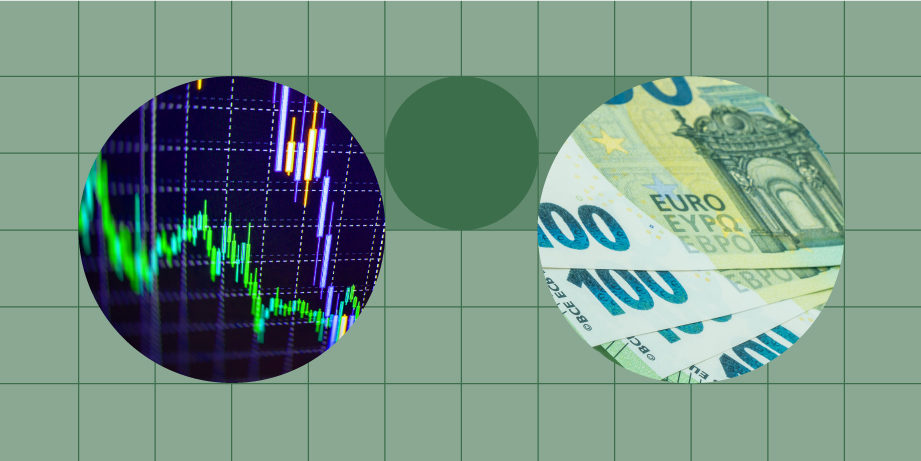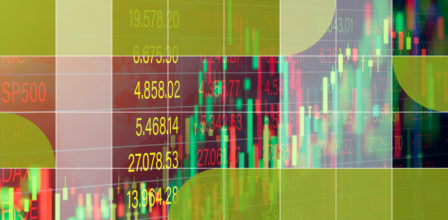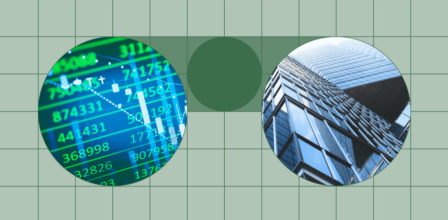Market commentary bonds: From 2022 to 2023 – How strong will the recession be this year?
2022 brought the weakest fixed income returns in decades due to inflation and interest rate increases. In 2023, on the other hand, the focus will be on the economic downturn. If the upcoming recession is not too severe, 2023 could be a good year for fixed income investors.


Dr. Harald Henke
Head of Fixed Income Strategy
Annual Review 2022
Inflation was the dominant theme of 2022. Due to expansionary fiscal policy to combat the consequences of the Covid pandemic, pandemic- and war-related dislocations in global supply chains, and the rise in energy prices, global inflation rates rose to levels last seen in the early 1980s. In the US, consumer prices climbed 9.1% over the year in June 2022, while inflation in Germany stood at 10.4% in October 2022.
Accordingly, central banks put the fight against inflation at the centre of their policies and raised key interest rates more aggressively than they had in decades. Figure 1 shows the interest rate path for the USA and the Eurozone.
Figure 1: Key interest rates in the USA and the Eurozone
Whereas at the beginning of 2022 the key interest rates in the US were 0%-0.25% and in Europe 0% (and the deposit rate -0.5%), at the end of 2022 the US key interest rates stood at 4.5% and those of the ECB at 2.5%.
Such an abrupt and unexpected rise in interest rates in 2022 caused turmoil in the rates markets. Due to the pricing in of higher interest rate expectations, yields rose noticeably in all maturity segments, as Figure 2 illustrates.
Figure 2: Interest rate increases in 2022
US ten-year rates climbed from 1.51% to 3.87%, while German ten-year rates rose from -0.17% to 2.57%. The movement was even more extreme in the two-year range, rising from 0.73% to 4.43% in the US and from -0.62% to 2.76% in Germany. This means that on both sides of the Atlantic the yield curves are inverted, a reliable sign of an impending recession.
Recession fears also drove credit spreads up significantly in 2022. Euro IG spreads rose from a start-of-year level of 0.95% to as high as 2.34% in mid-October and closed the year at 1.67% after a year-end rally. US credit saw a similar trend with spreads rising from 0.81% at the start of the year to as high as 1.70% in October to end the year at 1.21%.
Figure 3: Spread increase in 2022
Rising interest rates, widening spreads and a gradual increase in inflation expectations led to the worst bond year in decades. Figure 4 shows the euro-hedged returns of various fixed income asset classes in the calendar year 2022.
Figure 4: Fixed income returns in 2022
Government bonds, investment grade (IG) corporate bonds and high yield bonds each had double-digit negative returns for the year. Remarkably, global inflation linkers were the worst performing asset class in a year when inflation rates rapidly spiked. However, as this asset class has a high duration, the interest rate increases more than compensated for the inflation. Comparatively, investments in short maturities performed best, with 1-5-year corporate bonds returning between -7.7% and -8%, depending on the regional focus.
Outlook: Less inflation, less growth
In the meantime, however, inflation rates have peaked almost everywhere and are on the retreat. Nowhere is this more evident than in the USA, where the inflation rate was still 9.1% in July, but is now only 7.1%. The individual components of the inflation rate are also declining.
Figure 5: Inflation rate and components in the USA
Panel B of Figure 5 shows that all components of the inflation rate are still high. The core inflation rate is 6%, food prices are currently rising at 10.6% and energy prices are growing at an annual rate of 13.1%. However, the growth rates of all components have been declining recently. In particular, energy prices, which were still rising at an annual rate of 41.6% in June, are showing a clear slowdown in growth. If this trend continues, a clear normalisation of inflation can be expected in 2023.
Recession ahead
One of the main reasons why many market participants expect declining inflation rates is the expectation of an imminent recession in the US and the Eurozone, which may have already started by the end of 2022. Weakening economic growth, inverted yield curves and especially weak leading indicators make a recession in 2023 very likely. For example, the S&P purchasing manager indices for manufacturing and services are in contractionary territory in both the US and Europe.
Figure 6: Purchasing manager indices (PMIs) in the US and the euro area
PMIs are to be interpreted in such a way that values above 50 signal an expansion of general economic activity, while values below 50 suggest a contraction. The December 2022 PMI values for Europe stand at 47.8 for manufacturing and 49.1 for services. In the US, these readings are even lower at 46.2 and 44.4.
The question seems to be less whether the US and Europe will be in recession in 2023, but rather how severe it will be. While the majority of market participants expect a moderate slowdown, some voices warn of a more significant decline given the magnitude of the speculative exaggerations of recent years.
“The question seems to be less whether the US and Europe will be in recession in 2023, but rather how severe it will be.”

Dr Harald Henke
Head of Fixed Income Strategy
Is the labour market holding up?
One argument optimists cite is the strength of the labour markets in the US and Europe. In many countries, unemployment rates are at or near long-term lows. For example, the unemployment rate in the US is 3.7%, while in Germany it is currently 5.5%. While the build-up of inventories in the face of 2022 supply chain issues has led to a one-off positive effect, employment levels are still very stable.
However, upon closer inspection, inconsistencies and risks are present. While in the US the Non-farm Payrolls, which have shown a systematic build-up of employment, are the most widely followed labour market publication, other indicators show a more moderate picture. The Household Survey, for example, published at the same time, shows a significantly lower build-up of employment.
Figure 7: Labour market in the USA
Methodological differences between the two measures lead to different results, and it remains to be seen which of the time series will converge to the other. The non-farm payrolls, for example, contain an estimate for newly created jobs from business start-ups, as the actual figure is only available with a long delay. Experience shows, however, that this estimate is often subject to revision at cyclical turning points. This could mean that the non-farm payrolls overestimate the current labour market situation.
One indicator for that was a study by the Philadelphia Fed published on December 13, 2022. Using more accurate Census data, the researchers concluded that only 12,500 new jobs were created US-wide between March and June instead of the more than 1 million indexed by the non-farm payrolls. If the pessimists are right, a sharp and rapid slowdown in the US labour market is likely ahead.
In any case, however, a significant decline in aggregate demand is likely to lead to a decline in inflation rates and thus in interest rate expectations. Central banks would then realise that the cycle of interest rate hikes has gone too far too fast and would lower key interest rates again. All this gives fixed income investments a tailwind and is already reflected in the interest rate expectations of market participants (and even the Fed).
Figure 8: Forward curves and fed dot plots
Money market forward curves indicate the expectations of market participants for future key interest rates. While further interest rate increases are expected in the short term, medium-term expectations are much more moderate. For example, one and a half interest rate hikes are priced in for the US until June 2023, while in the eurozone four interest rate hikes are still expected until September 2023. However, Figure 8 also shows that in the twelve months following the interest rate peak, two downward interest rate steps are already expected in the Eurozone, and even four in the US.
Interestingly, even the Fed sees it this way. In its dot plots, an estimate by each member of the future interest rate path, the median expectation for 2023 is 5.125%, but for 2024 it is a full percentage point lower. Falling interest rates and thus positive interest rate change returns are therefore currently the market consensus for the medium term.
Spreads are attractive
The second important component for credit investors is the spread change return. Have credit spreads priced in the economic concerns or are there still negative surprises ahead? Figure 9 shows the monthly spreads for Euro IG Credit since May 2000, sorted by size.
Figure 9: Euro IG spread levels in historical comparison
The dark bar represents the spread level at the end of December 2022. Despite the strong rally of the last quarter, these are still at the 77% percentile. That means 77% of all historical spreads were lower than spreads today, only 23% were higher. And an examination of when spreads were higher shows that they were almost exclusively crises such as the start of the Corona crisis in March 2020, the European debt crisis in 2010-2012 and the global financial crisis in 2008/2009.
This means that a medium recession is priced into the current spread levels. Although a stronger recession could still exert some upward pressure on credit spreads, in such a case it is likely that interest rates will fall in the market and thus positive interest rate change returns can be expected. Corporate bonds appear attractive in the current market environment.
A look at history shows that the probability of positive credit returns in 2023 is high. Since 1998, out of fifteen years with credit yield levels of more than 3% at the beginning of the year, there have only been two in which the realised annual return was negative. In 1999, Euro IG credits generated a return of -1.9% at a starting level of 4% in January 1999. In 2008, the return level at the beginning of the year was as high as 5.5%, but at the end the credit return of -3.3% was the second weakest in the last 25 years. Only 2022, with -13.6%, dwarfed all other years.
Figure 10: Correlation between initial return and annual return for Euro IG Credit
At the beginning of 2023, the yield of Euro IG Credit was 4.3%. If the annual return in 2023 were to lie on the trend line in figure 10, this would mean an annual return of 10.5%. However, many investors would be satisfied with much less.


